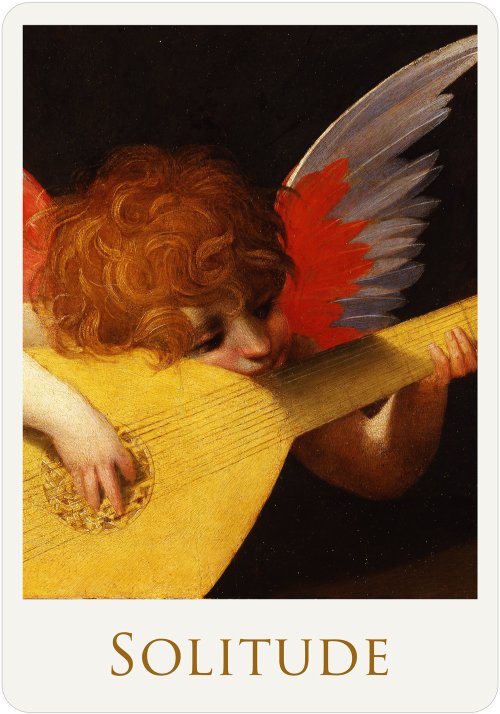The Solitude Angel Card

Positives
Being alone, separation, meditation, retirement
Negatives
Hustle, unrestrained fun, cheerfulness, too much noise
Interpretation
The solitude card points out that there is a time when you should go inside, think and meditate. Stop and contemplate what you have been doing and where you want your next steps to lead you. Company is as important to the man as is the ability to calmly and alone reflect on what he has experienced and what are the lessons learnt from his experience. Angels are advising you to find a moment for yourself only. Find out what you are as well as are not missing from the outside world. This card will also help you to give enough space to your loved ones - they need to be alone from time to time as well so allow them to do so and be understanding.
The Image On The Card
The illustration on this card is an angel originating from the painting "Angel Playing the Lute" dated to the year 1521. It was painted by the Italian painter Rosso Fiorentino.
The angel is literally lying on a lute that seems to be bigger than himself (we can only guess since his body behind the lute). The lively curls and almost translucent wings bring liveliness to the otherwise still and simple arrangement of the painting. Power taking a rest which is combined with the lightness of feathers, can be found in the colour red which is directing the viewer's attention to the centre of the picture. Here, the head of the angel is covered with hair, the face is distorted by the lute while the shadow lays in the middle of his face making it difficult to judge what is his mood. All we know is that the gaze and focus are on the strings. His little hands can hardly control a demanding instrument like this one but heavenly beings are endowed with superhuman abilities and so we are eager to see what will be the celestial harmony sound of the next moment.
Thanks to infrared reflection, we now know that the "lute angel" was probably part of a larger painting unit. The composition is also remarkably reminiscent of a painting by Francesco Vanni created in 1600, which you can see below. This was probably Vanni's inspiration.





